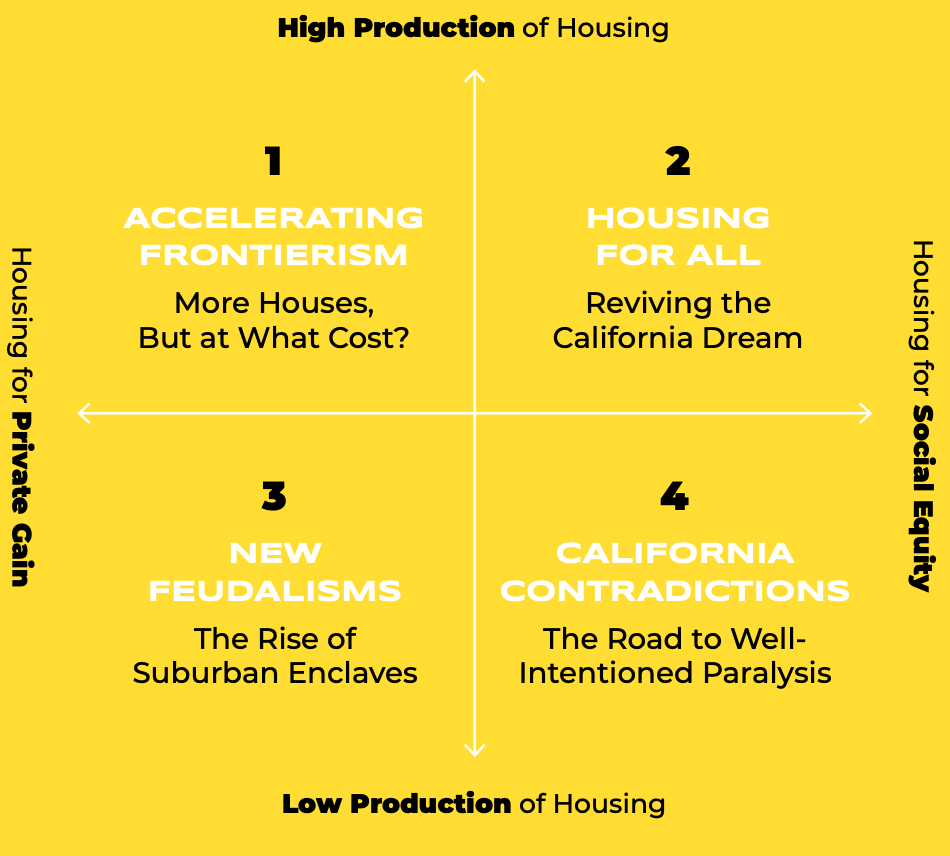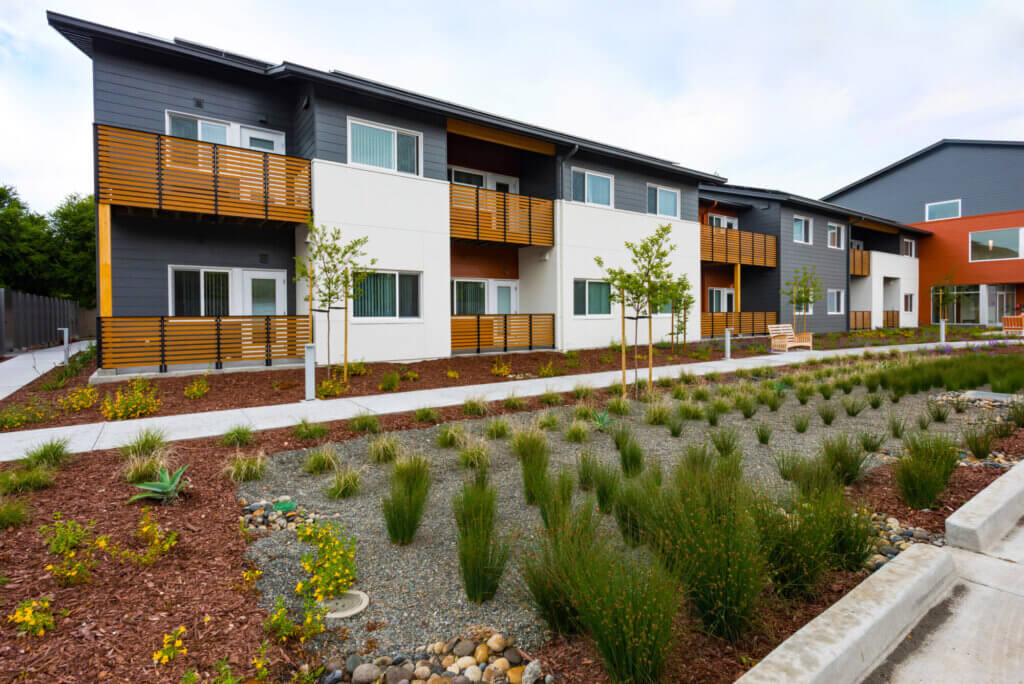Future of Housing and Community Development Report: Possible Scenarios and Policy Alternatives for California 100
Published On March 30, 2022
The Terner Center, in partnership with cityLAB UCLA and the UCLA Lewis Center for Regional Policy Studies, has released new work looking at the past and future of housing policy in California, made possible by a grant from the California 100 Initiative. California 100 asked the team to imagine what the future of housing in California could look like, depending on the policy choices we make today, leading to two reports.
The first is the Facts-Origins-Trends Report, which draws on data and interviews to explore critical trends—both historical and contemporary—shaping housing in California. It details the drivers of California’s worsening affordability crisis, and argues that rising income inequality, systemic racism, political polarization, and climate change are the biggest threats to resolving the state’s housing crisis.
This background analysis informs the Future of Housing and Community Development Report, which highlights key data trends and then presents four scenarios based on variations across two critical dimensions: 1. how much new housing we build and 2. how deeply we value and prioritize social and racial equity.

Let’s take one scenario: New Feudalisms: The Rise of Suburban Enclaves. In this scenario, the state continues to build too little housing to meet demand, private property rights are valued over housing as a public good, and renters confront ever-rising rents and receive minimal state assistance in the form of subsidies or renter protections. In this future, scarcity—not just of homes, but of government support, tenant protections, and public interest—has heightened tensions and deepened inequality. Renters, working-class families, and households of color unable to afford housing migrate out of California at an increasing pace, and corporate landlords and investment firms consolidate their ownership of the homes left behind.
This is the path that many of the stakeholders that we interviewed think we are currently on. But we also imagined an alternative future, Housing for All: Reviving the California Dream, where we prioritize both housing supply and equity. In this scenario, policies are designed to create transformative investments in people and the built environment, wielding a variety of resources, incentives, and policies to spur housing production and support residents. House prices fall in line with incomes, low-income households receive help paying their rent, homelessness is rare, brief, and non-recurring, and the state makes meaningful progress towards closing the racial homeownership gap.
Through these two reports, we map out the policy solutions that may bring about each of the four scenarios. To move towards a future where housing is attainable for all, we argue that the state needs to allow and incentivize greater housing density, establish more robust public subsidies for housing production and preservation as well as programs to ensure housing stability and tenant protections, and redress racial inequalities and disparities.
________________________________________
About the California 100 Initiative
California 100, incubated at the University of California and Stanford University, released yesterday its first four issue and scenario reports focusing on the future of transportation, energy, housing, and technology in the golden state. In July, California 100 announced grants to 18 centers and institutes across California to examine future scenarios with the potential to shape California’s leadership in the coming century, with a focus on 13 priority research areas. California 100 will release the remaining 9 research reports this spring. The research will later be tested through deliberative polling exercises and engagement sessions directly with Californians in the summer of 2022 and into 2023 to inform a vision and policy strategy for the state’s future.
These research reports were produced as part of California 100’s research stream of work led by Henry E. Brady, PhD, Director of Research for California 100, current professor, and former Dean of the Goldman School of Public Policy.
California 100 announced its diverse and intergenerational Commission in October and its Advisory Council in December. California 100’s core mission is to strengthen California’s ability to collectively solve problems and shape our long-term future—through research, policy innovation, advanced technology, and engagement—by identifying, mobilizing, and supporting champions for innovative and equitable solutions.





